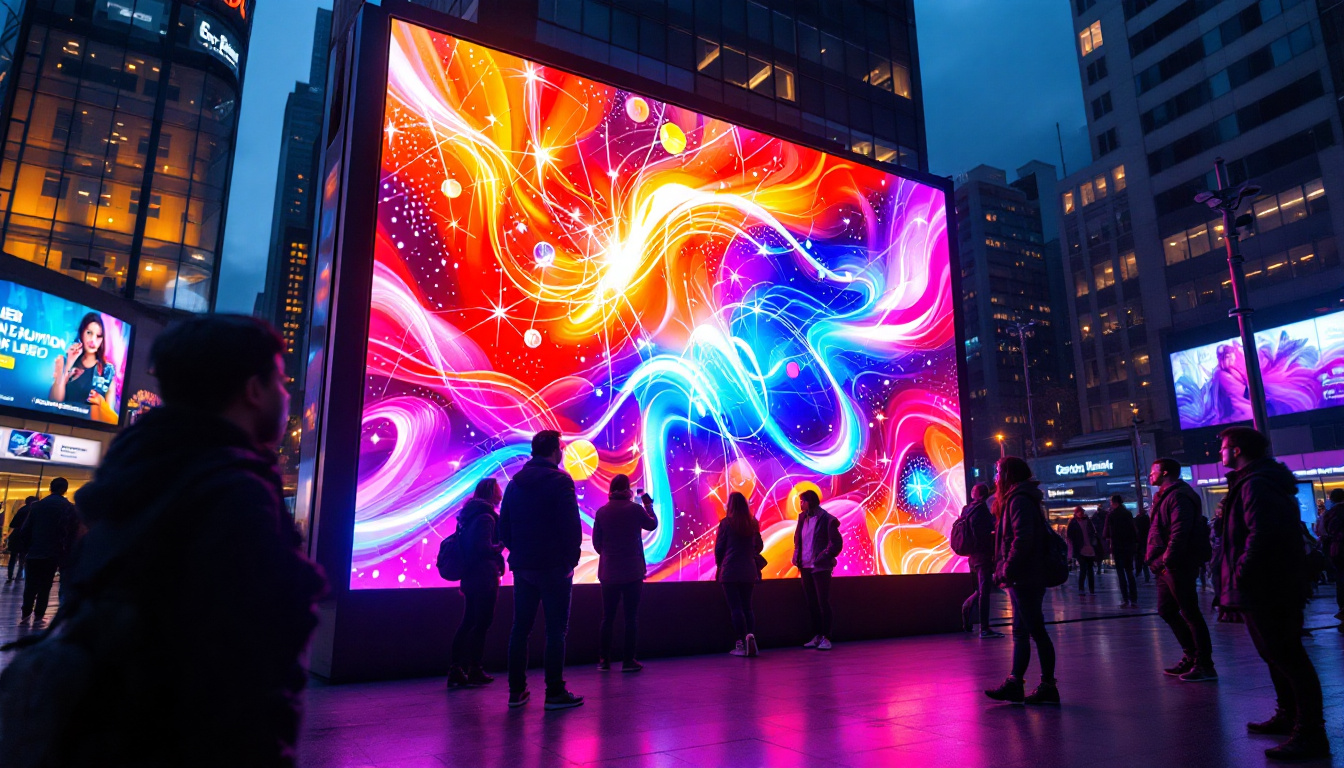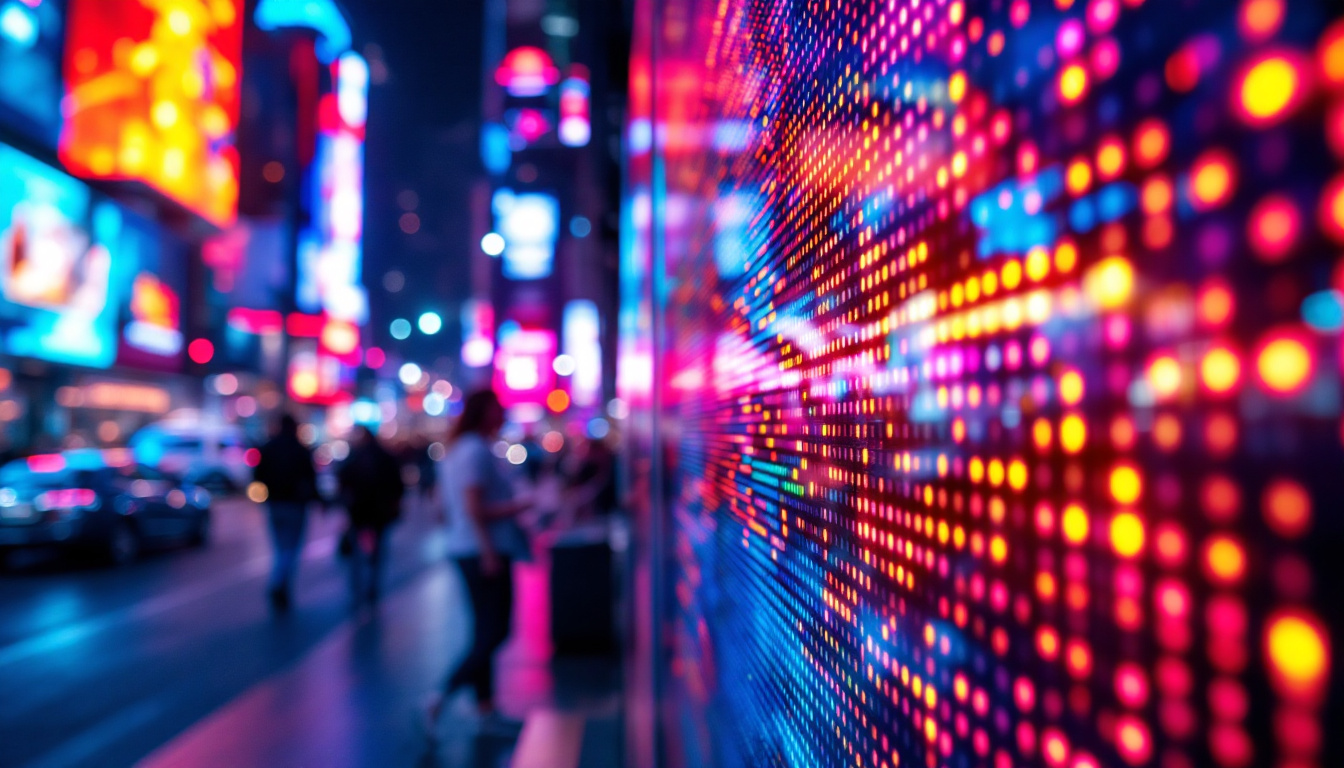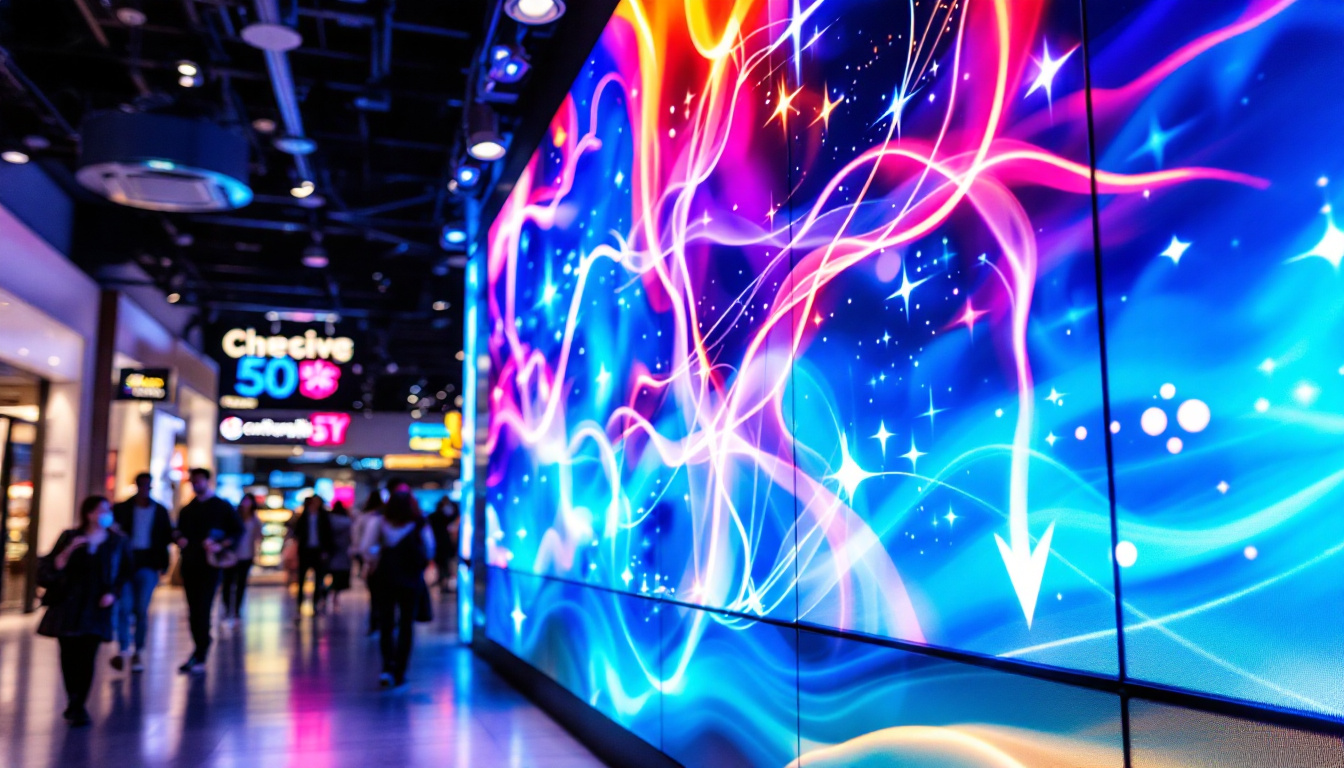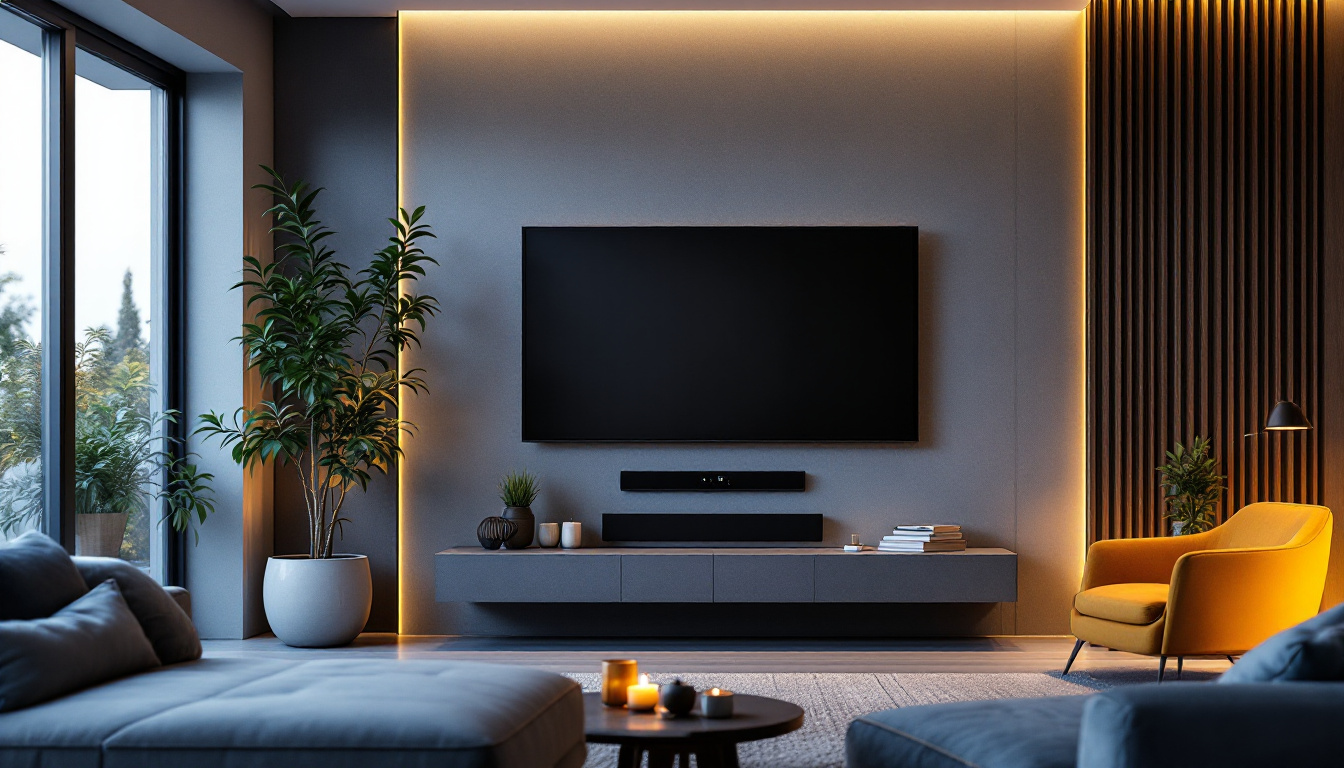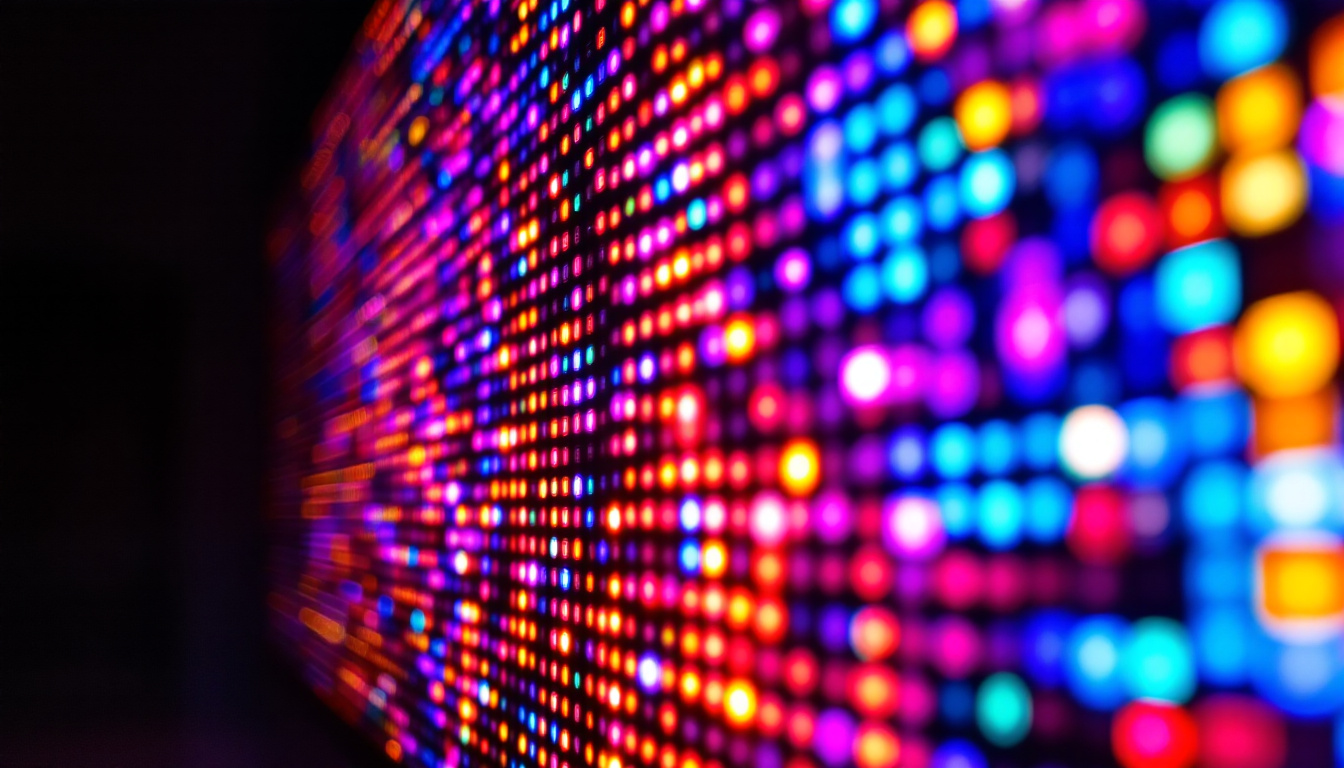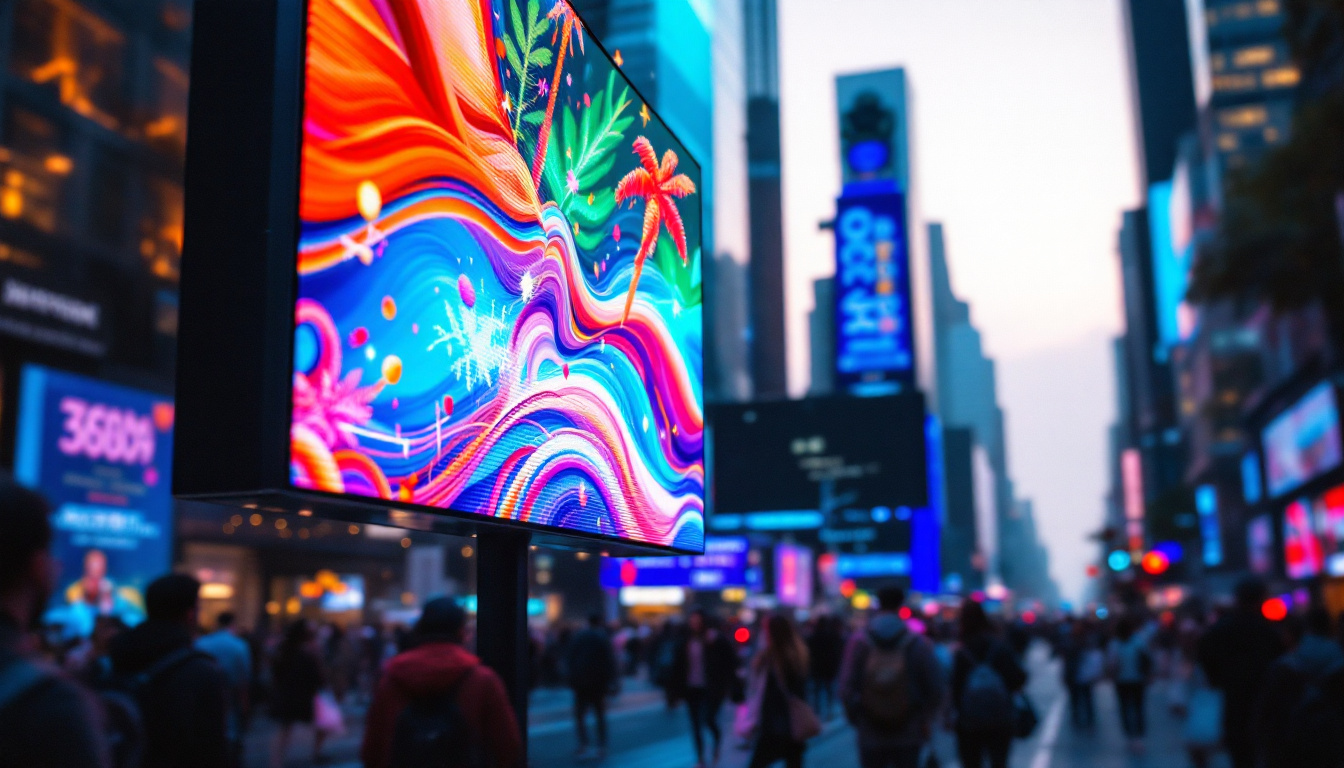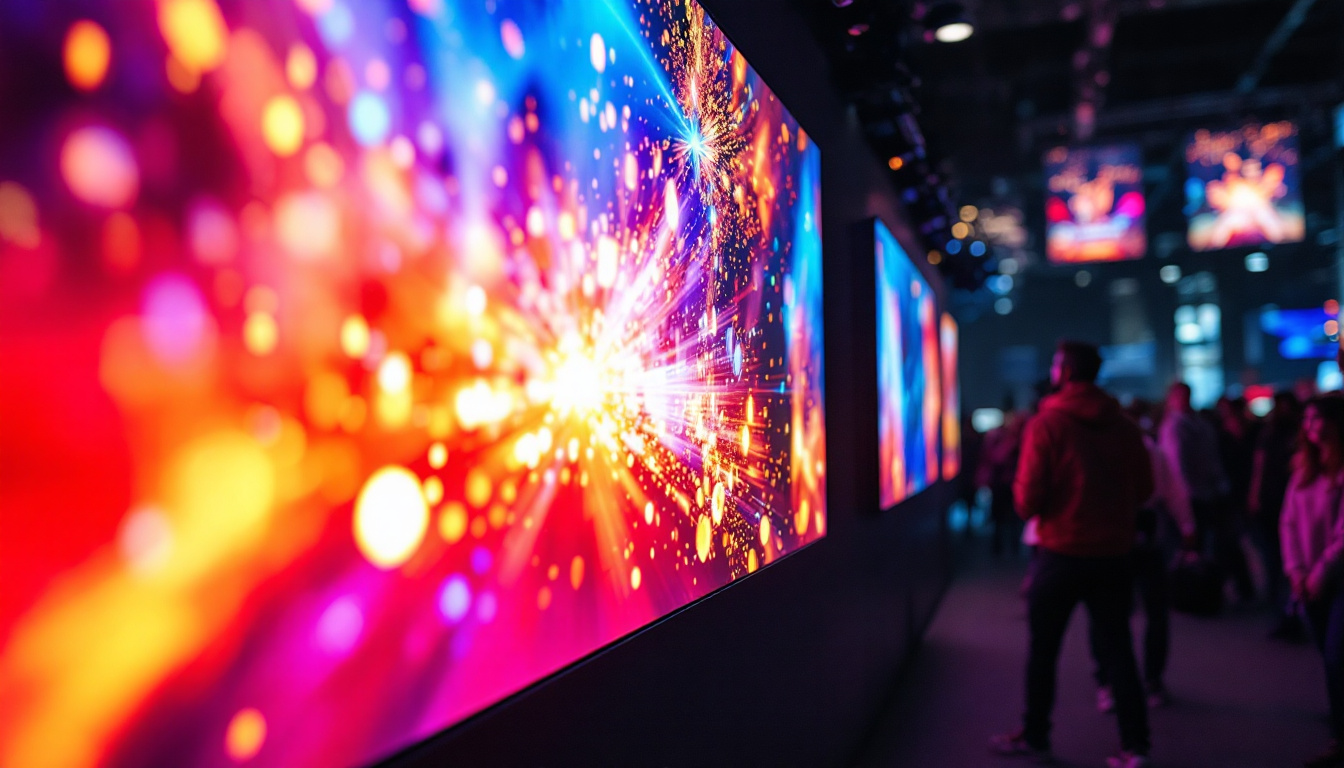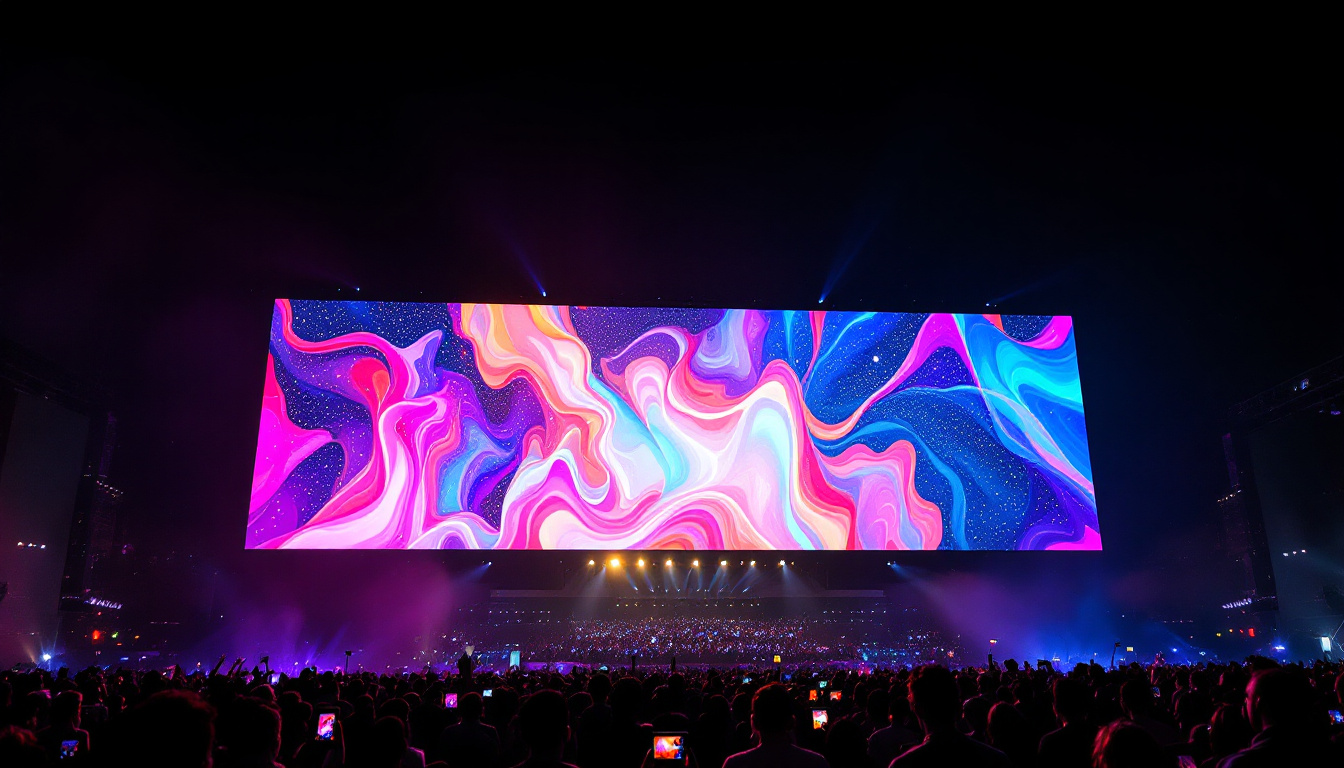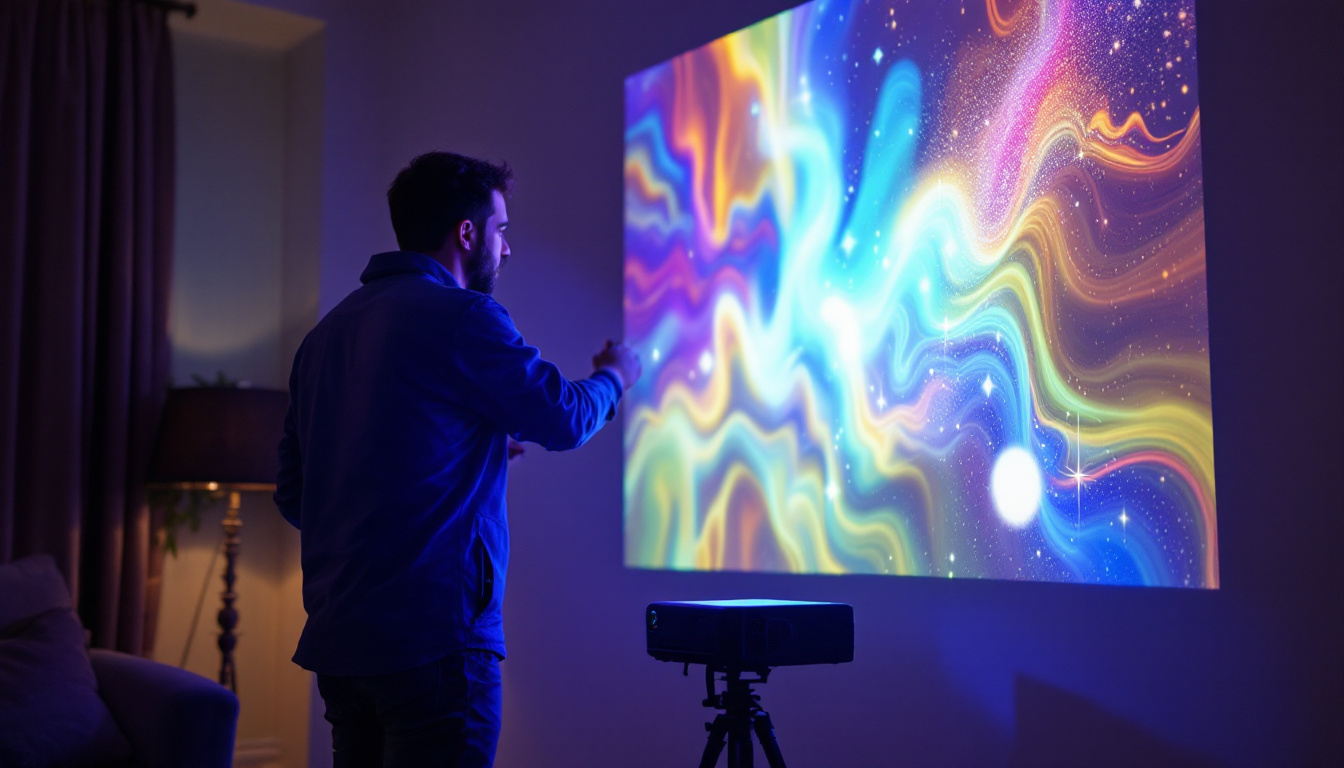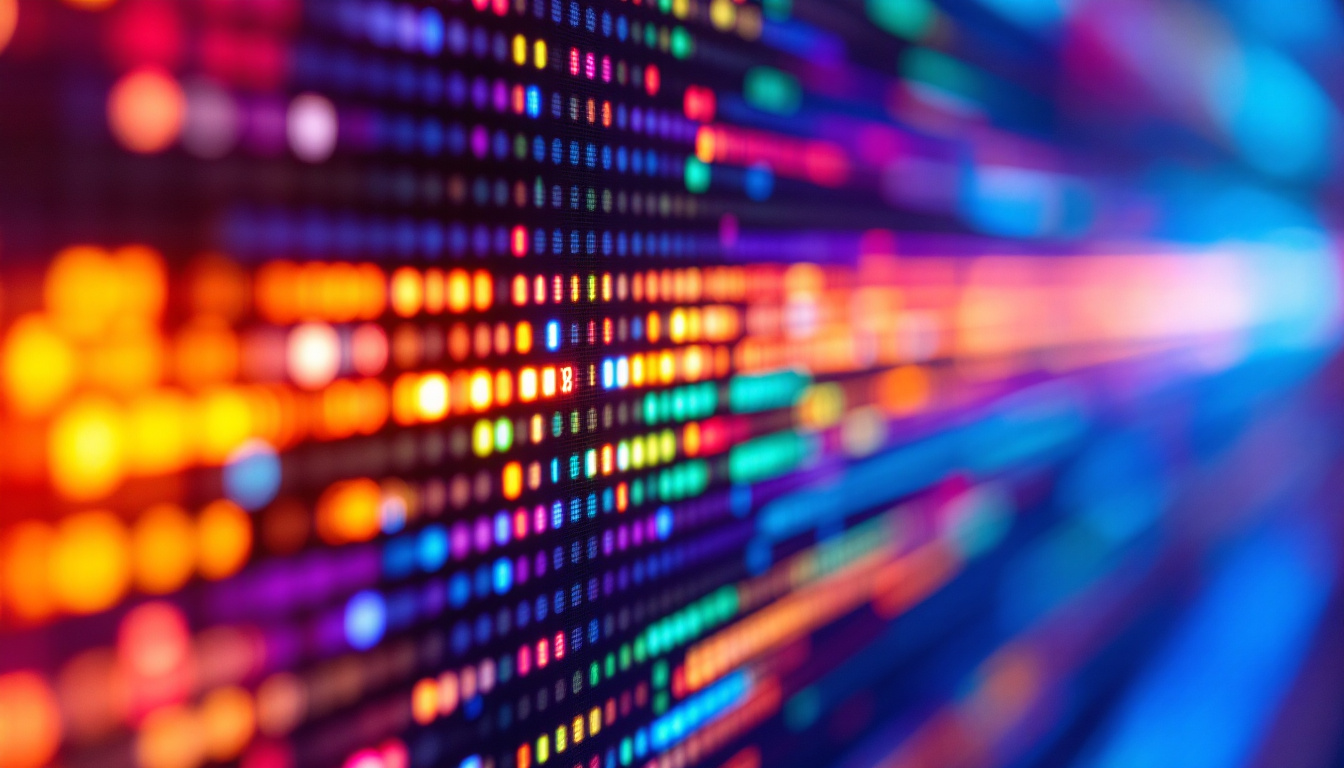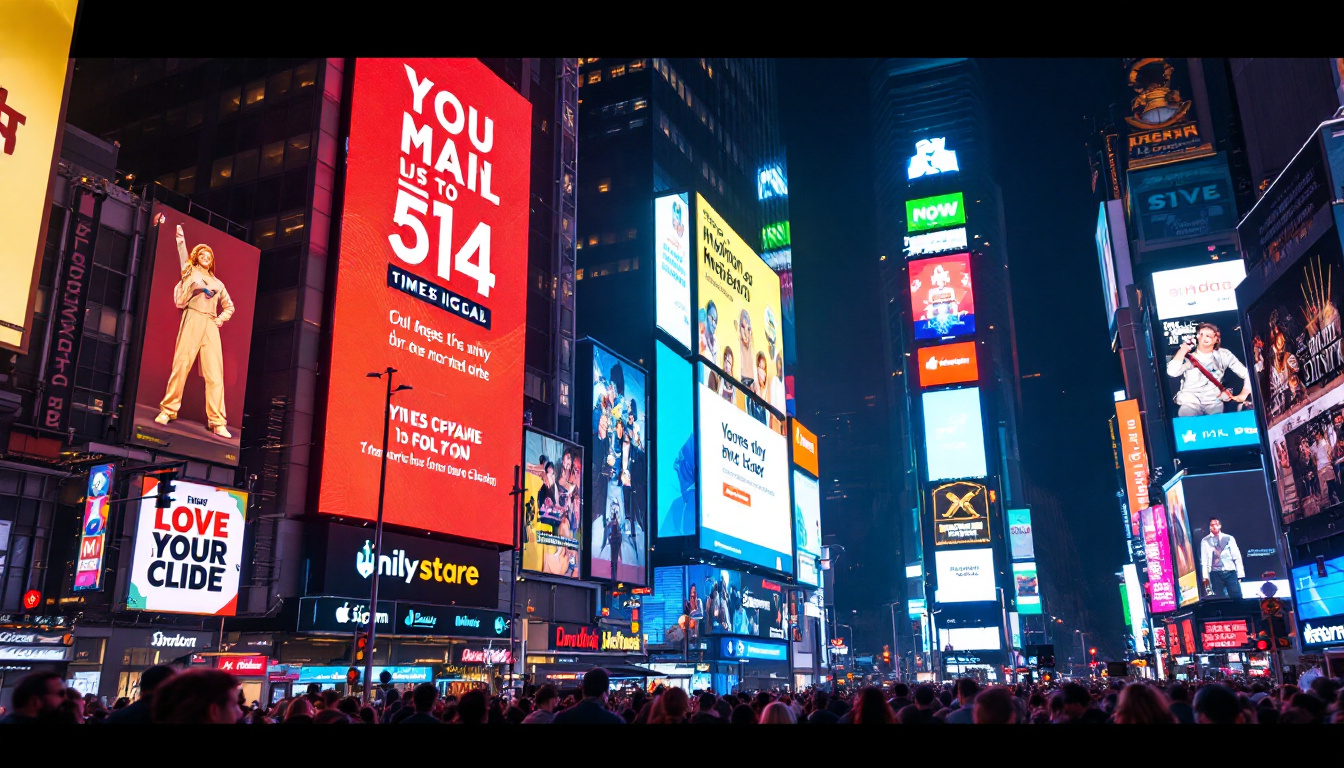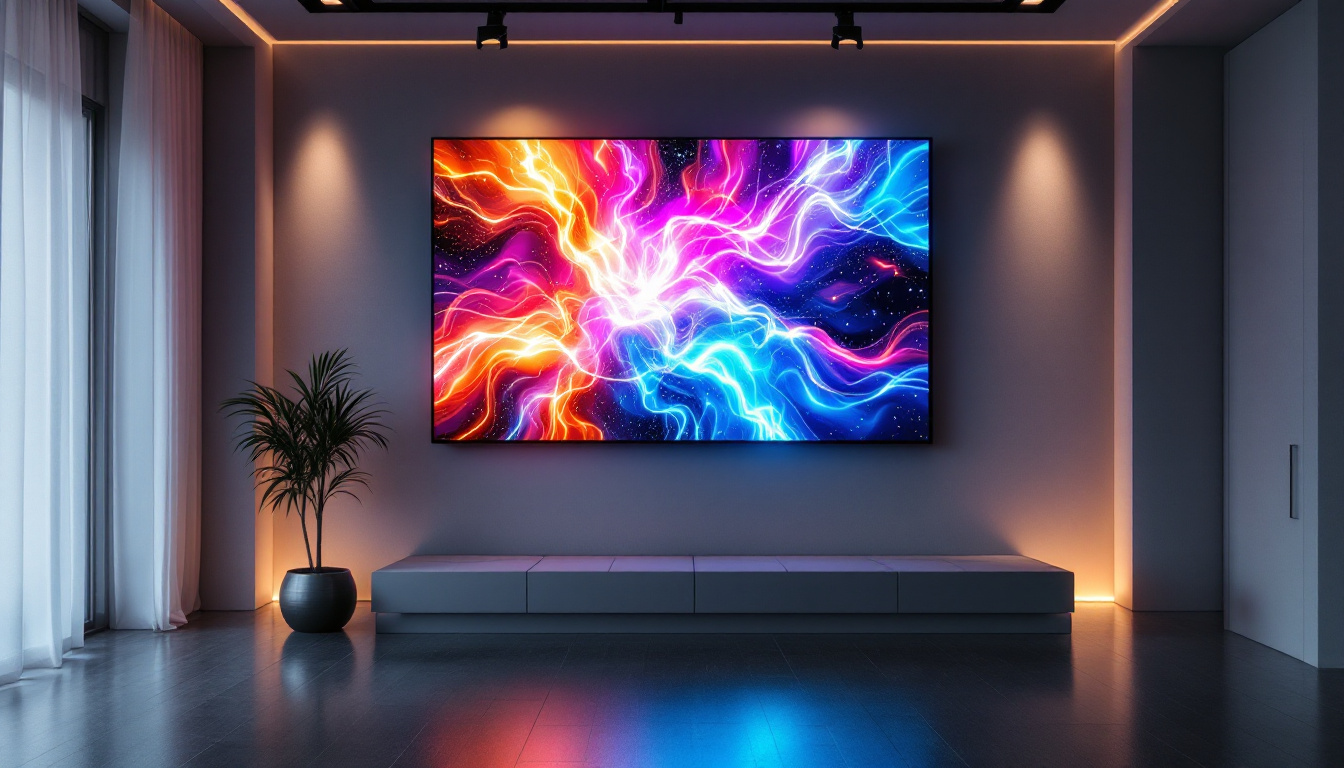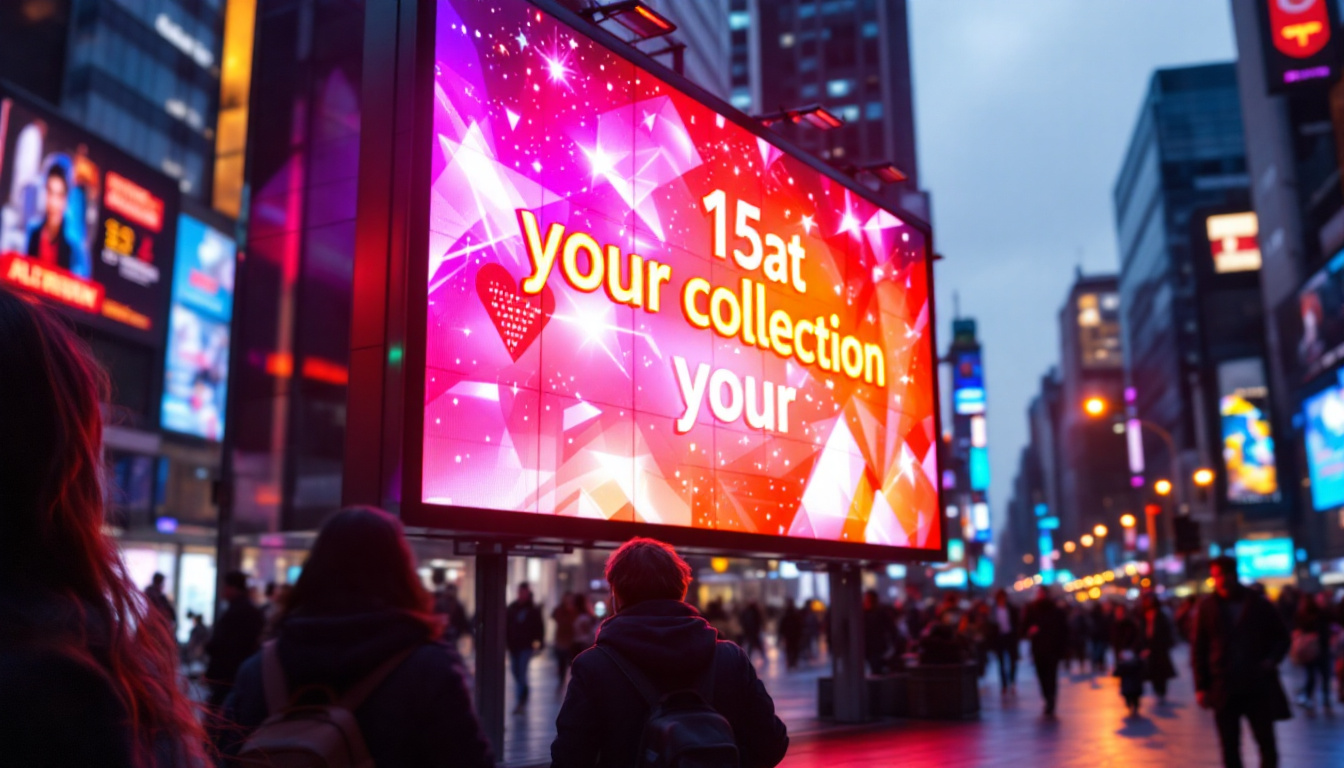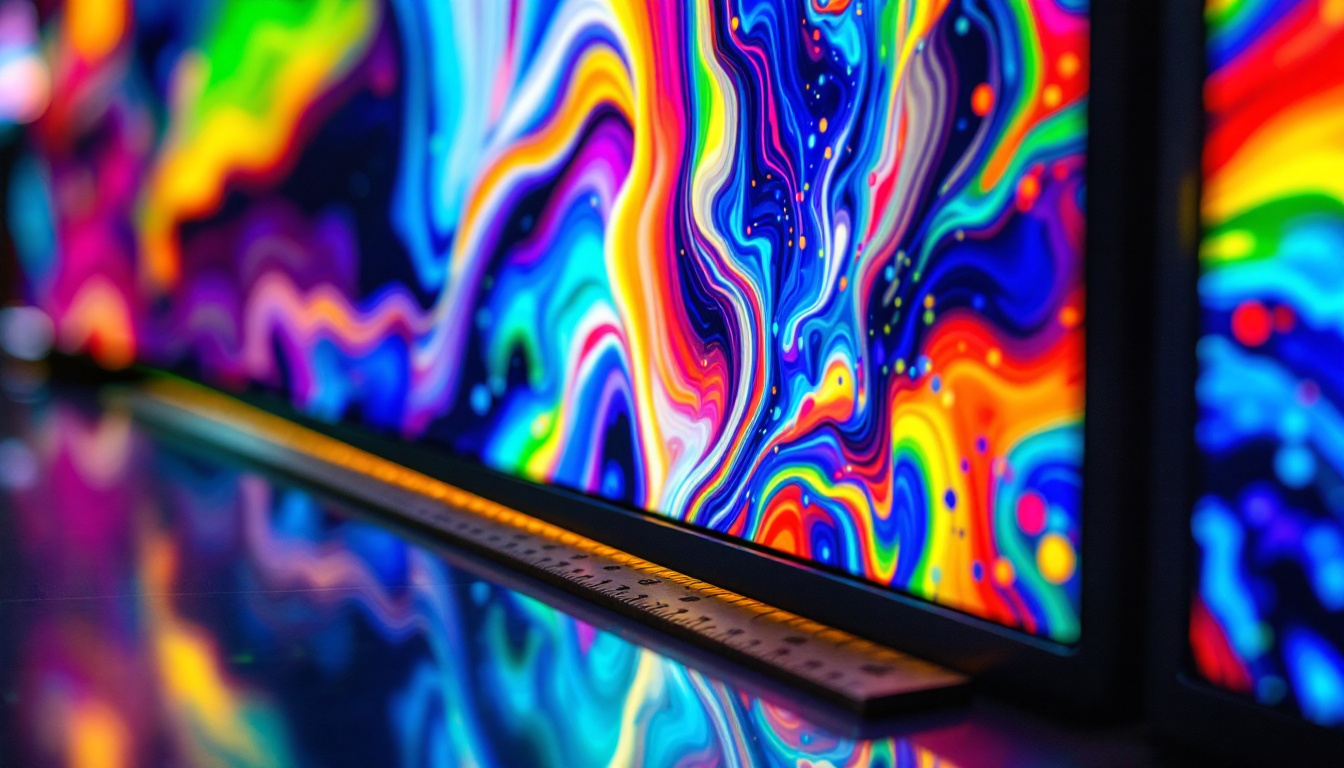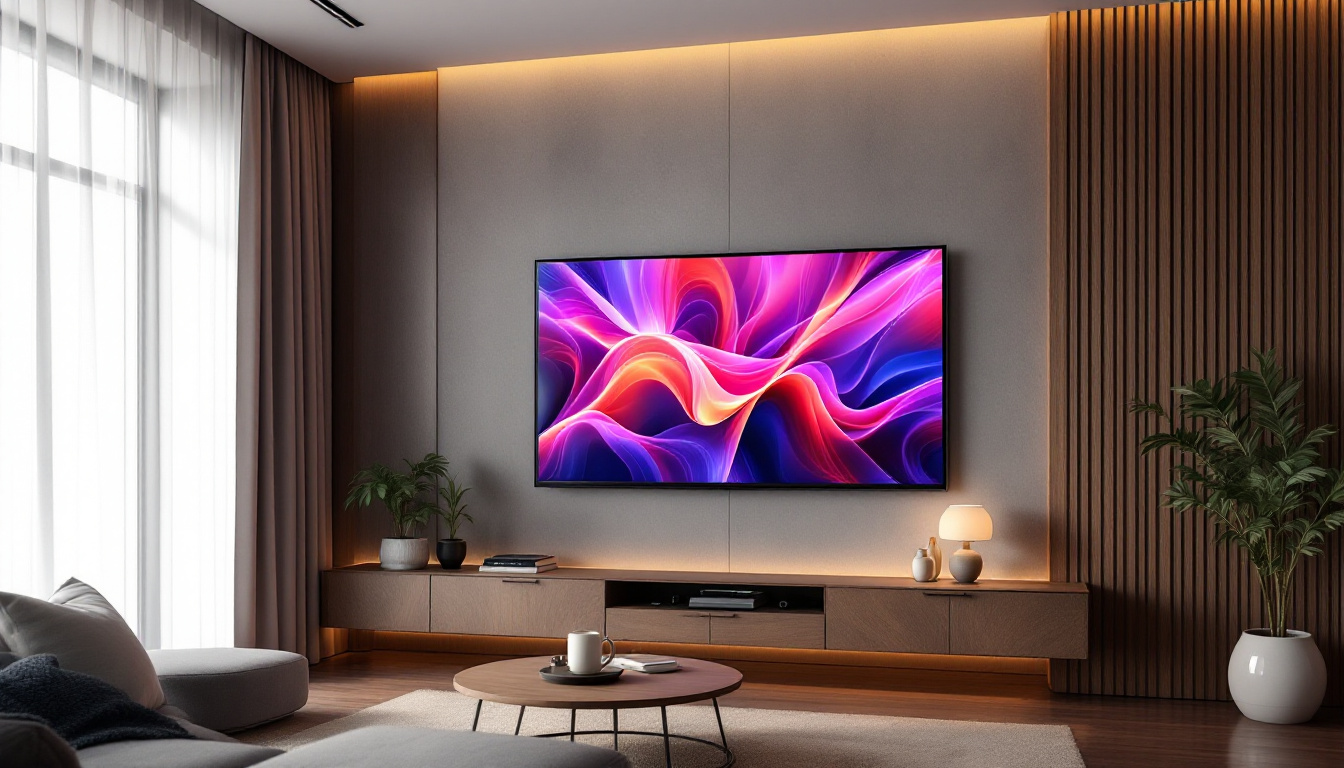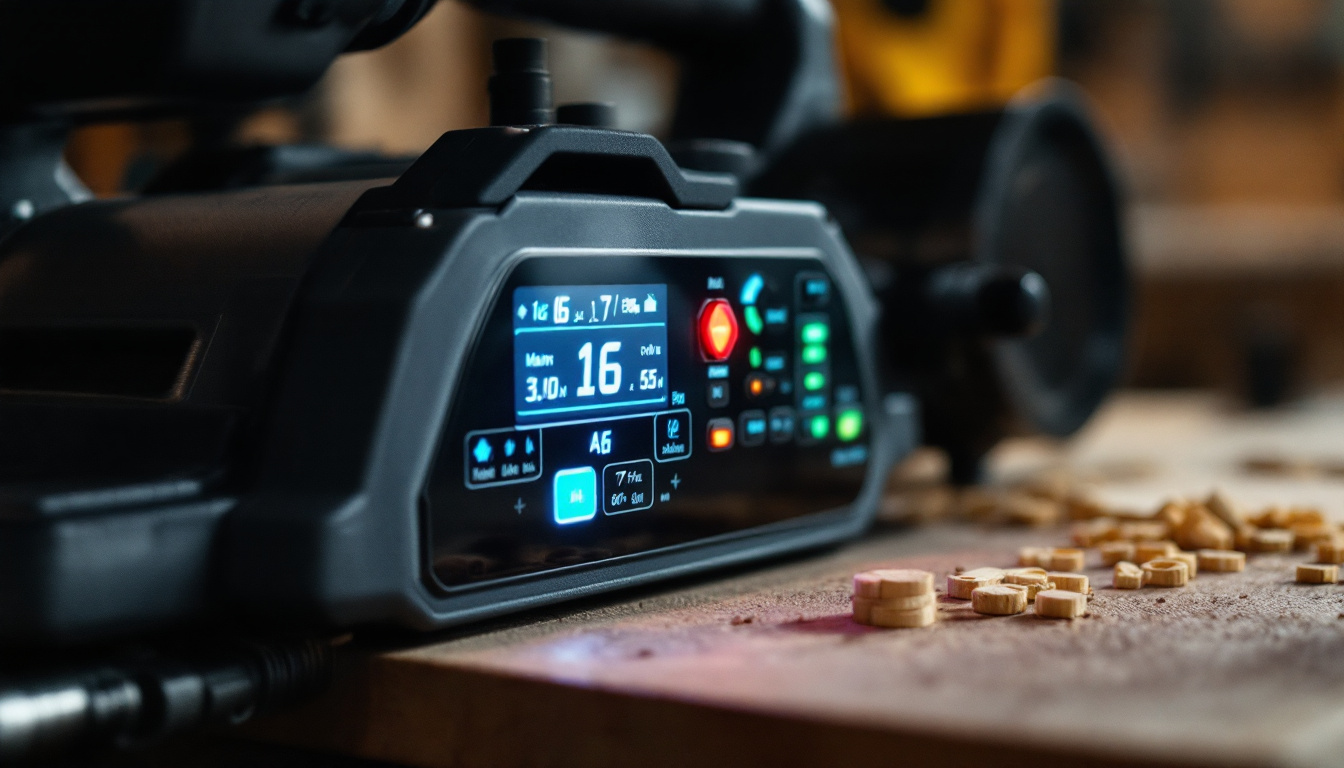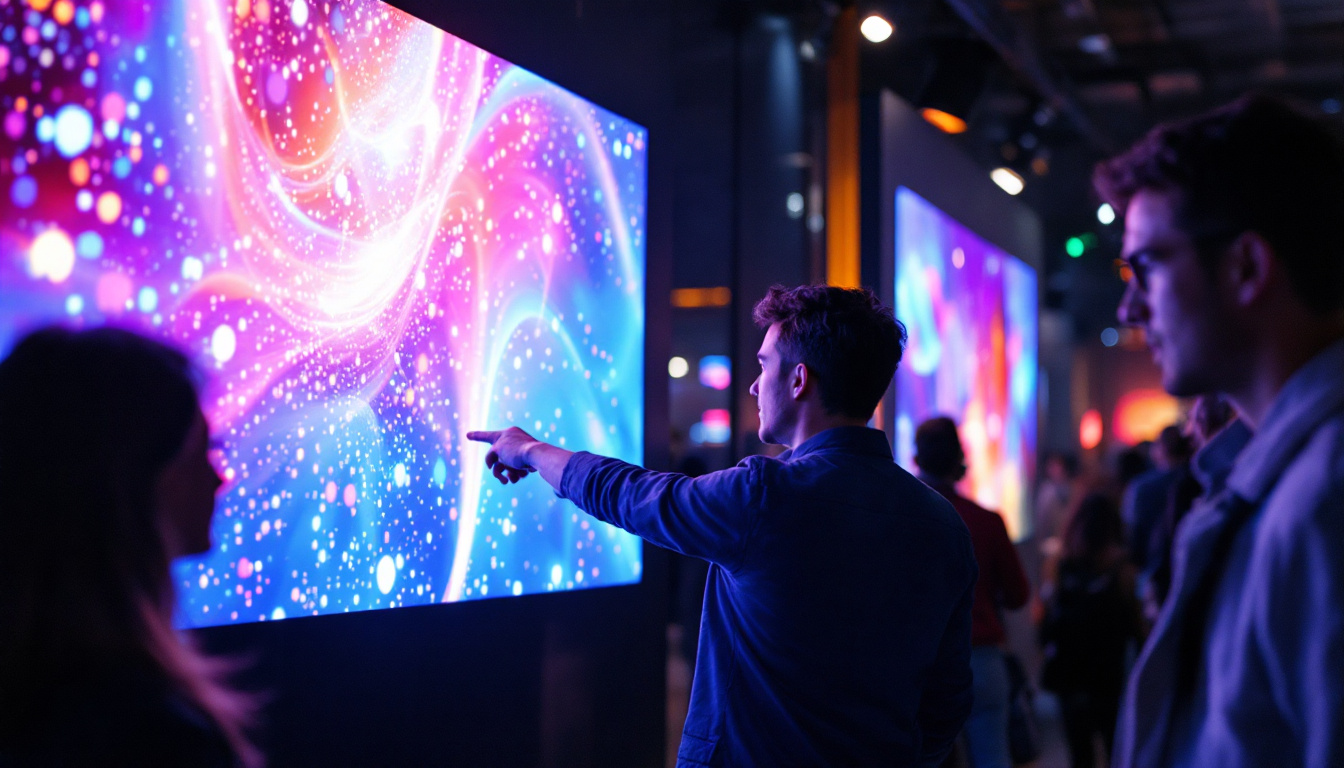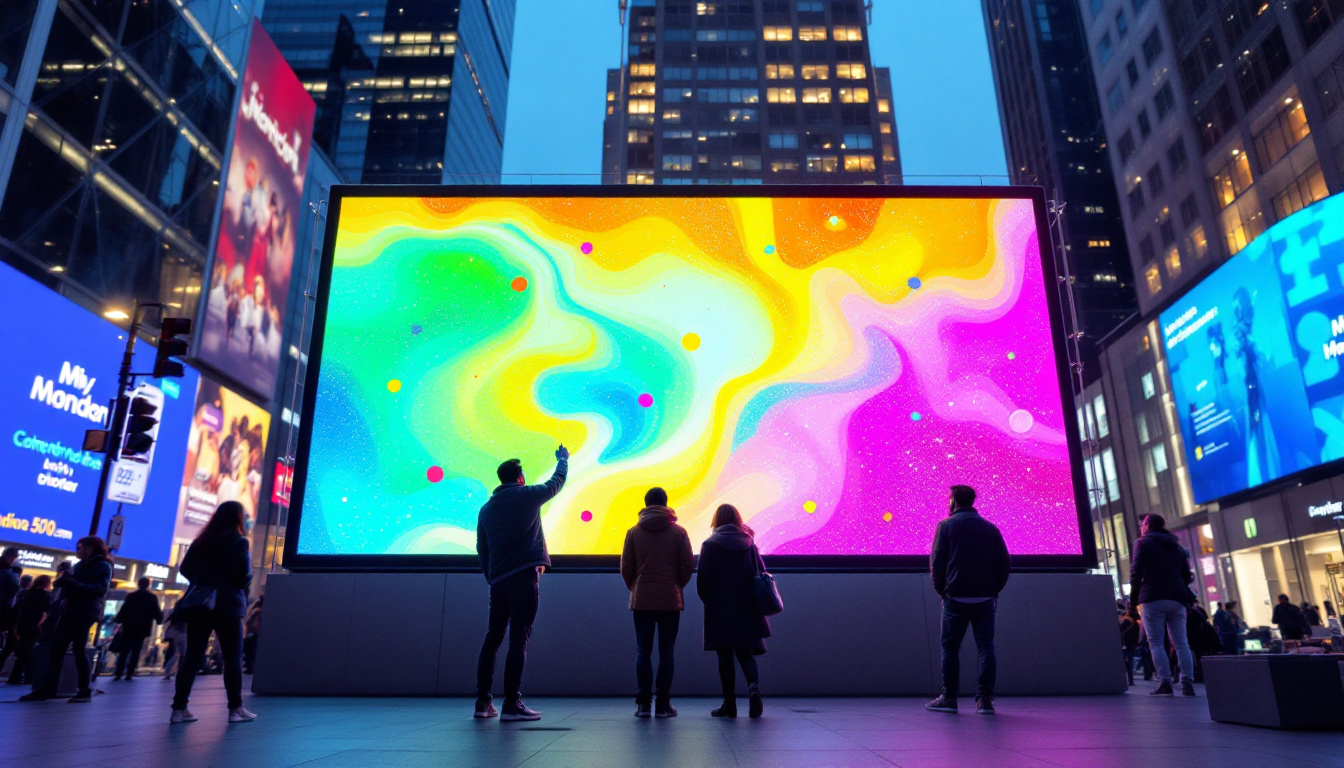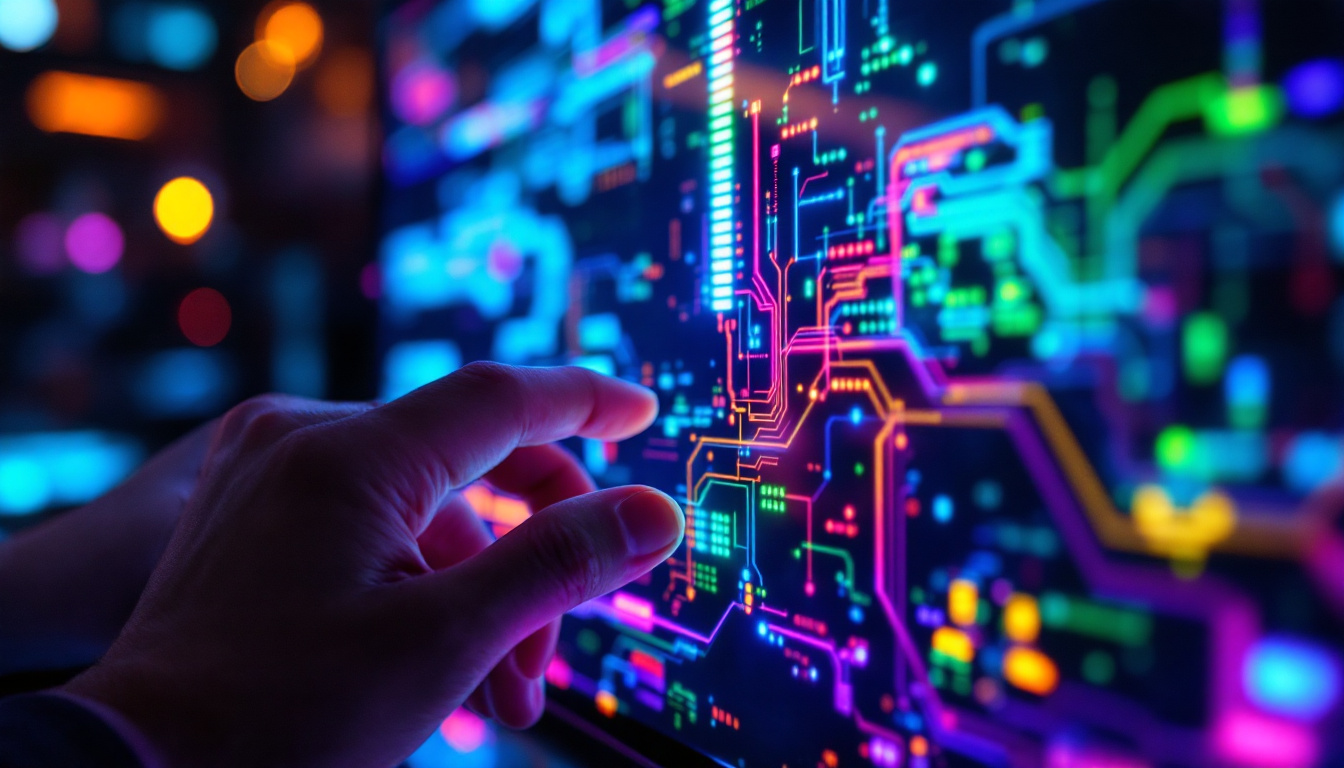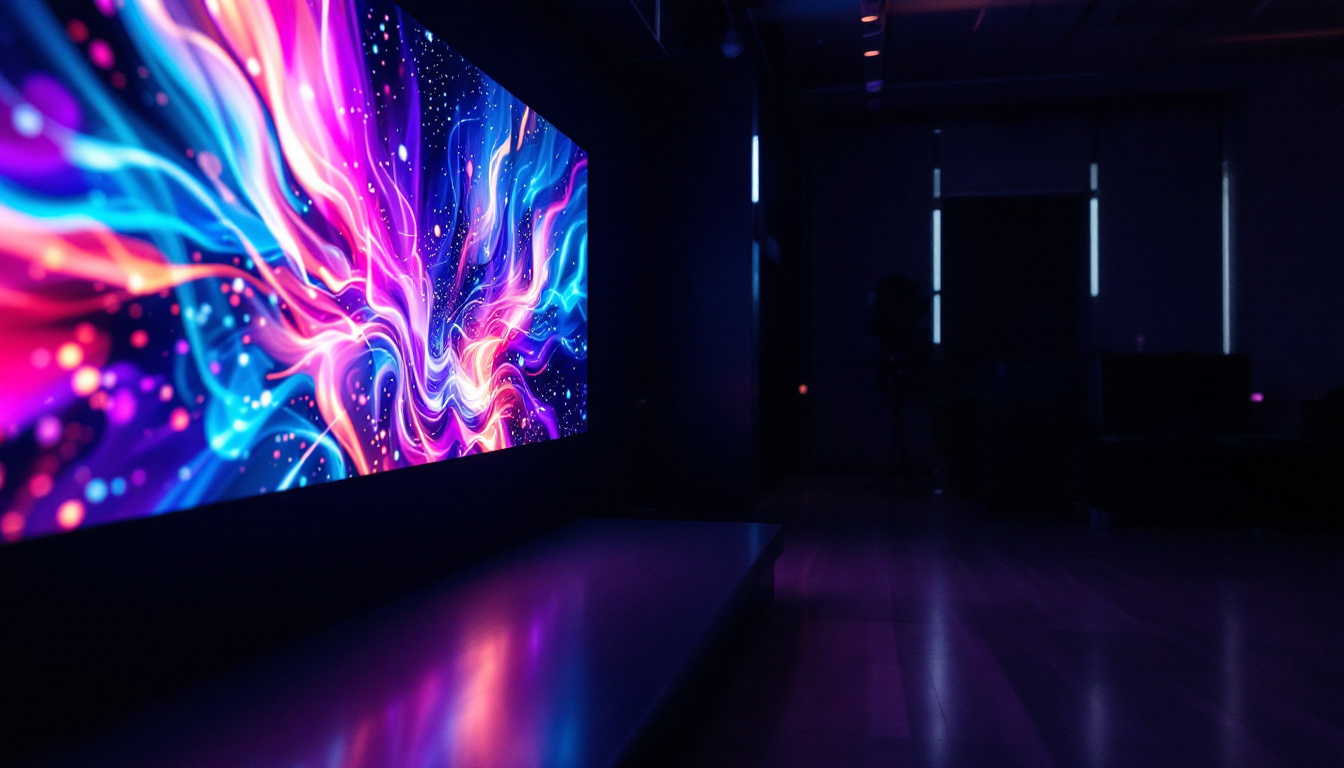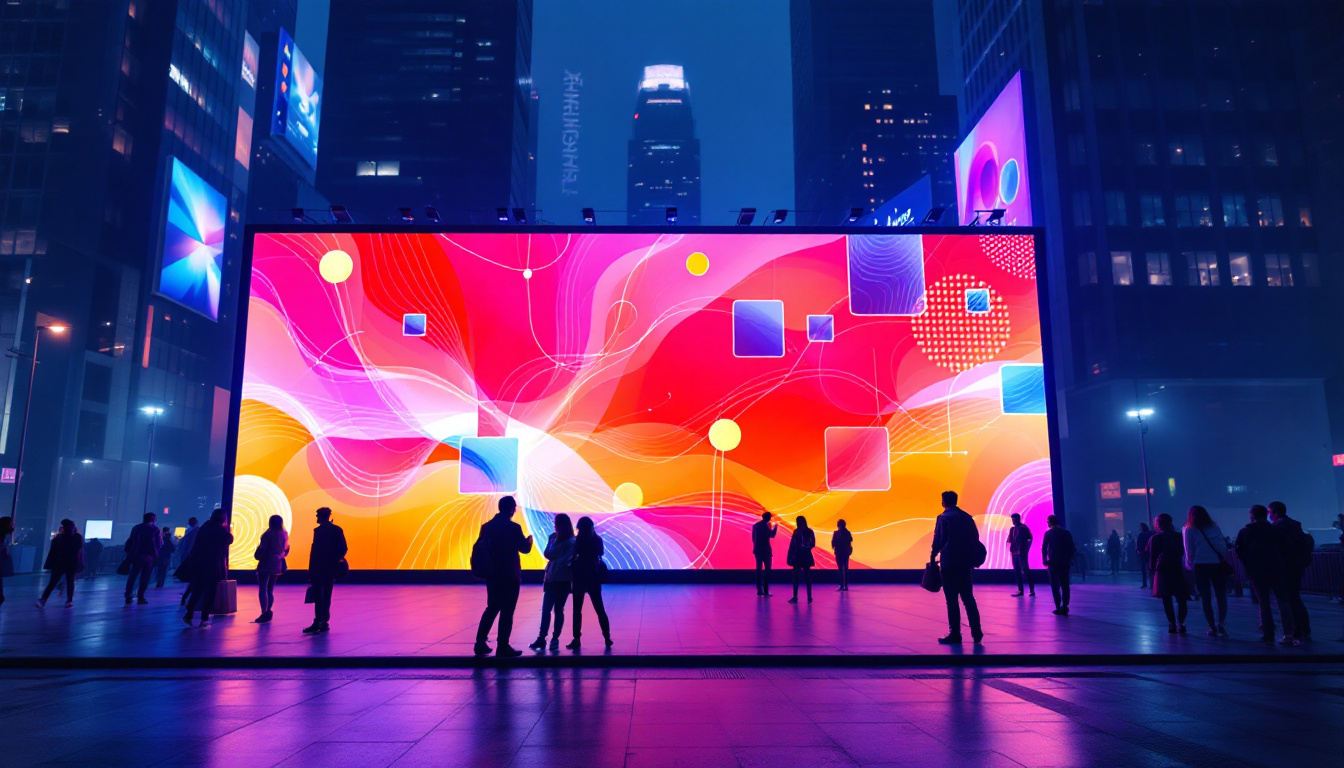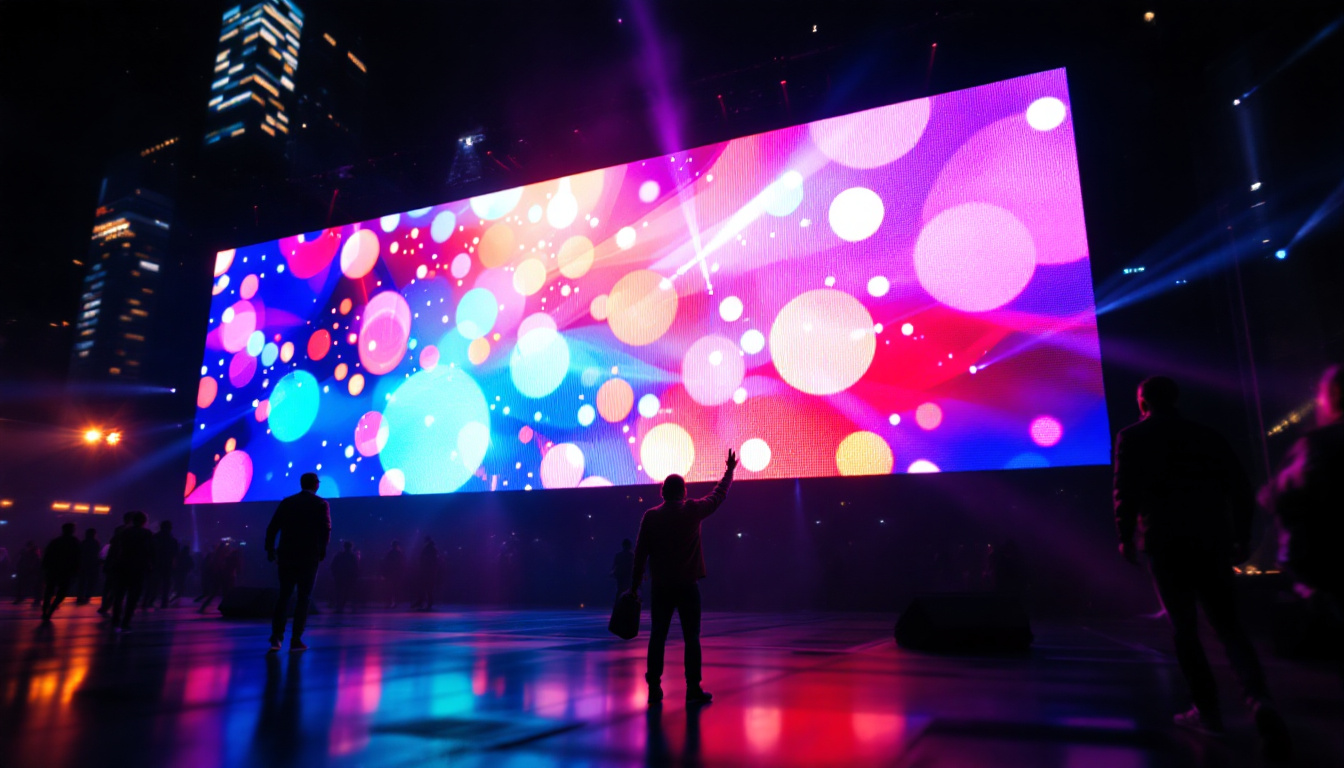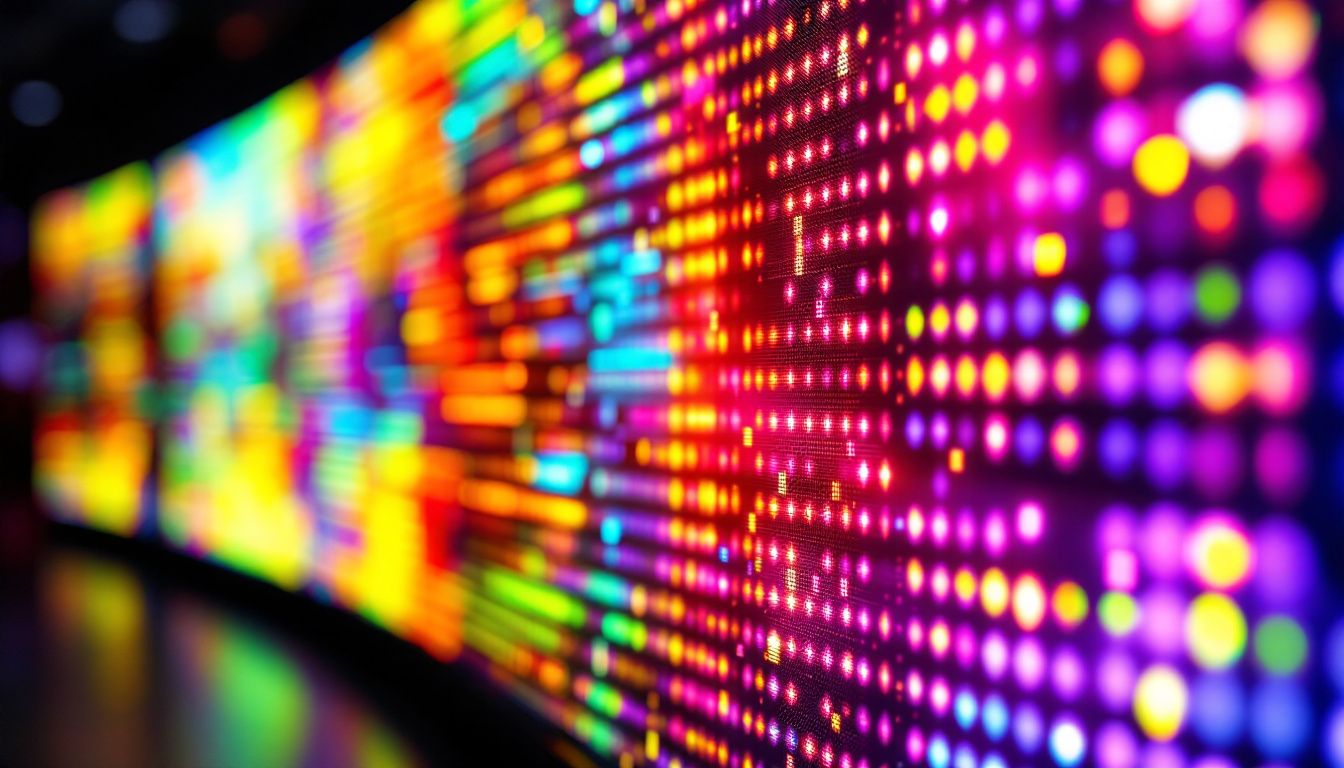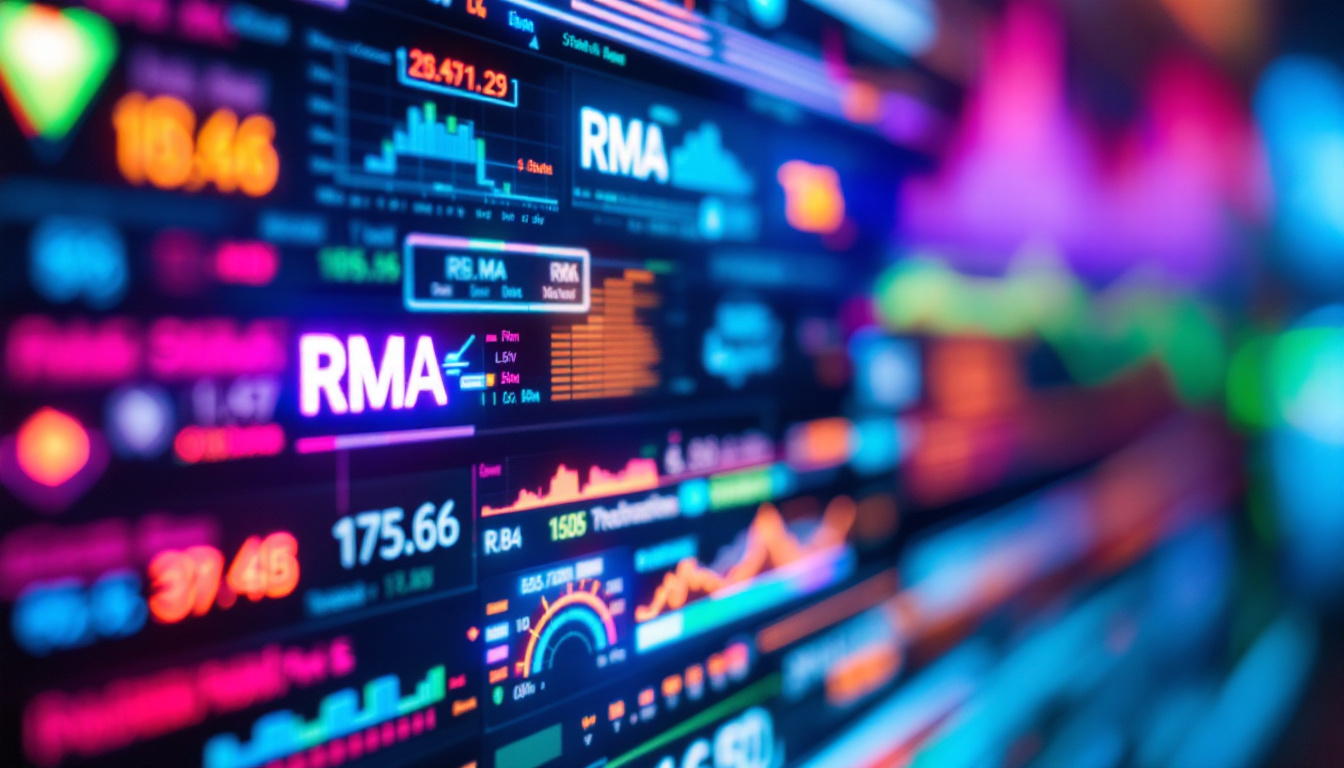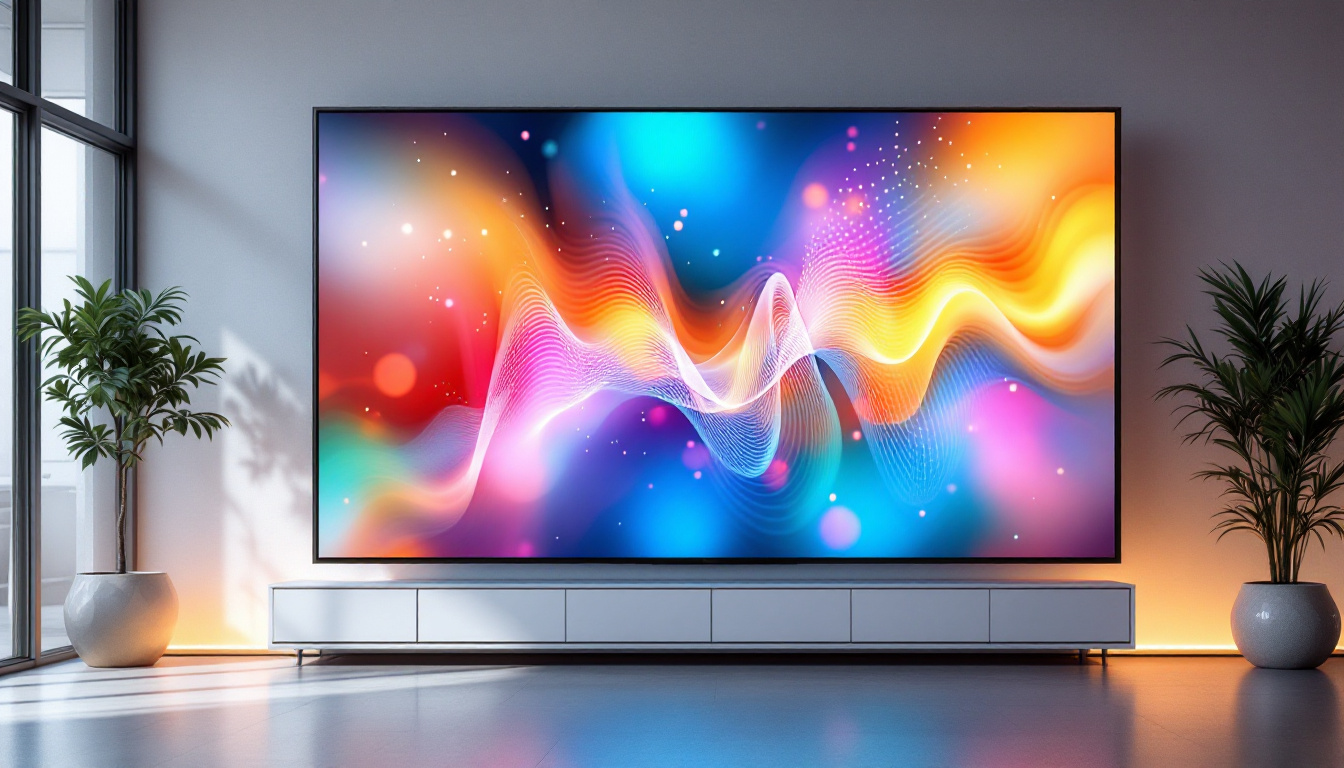In the modern world of advertising, the use of LED displays has become increasingly prevalent. These vibrant, eye-catching panels not only capture attention but also convey messages in a dynamic and engaging manner. This article delves into the intricacies of LED advertising panels, exploring their technology, applications, advantages, and future trends.
Understanding LED Technology
Light Emitting Diodes (LEDs) are semiconductor devices that emit light when an electric current passes through them. Unlike traditional incandescent bulbs, LEDs are more energy-efficient and have a longer lifespan. This technology forms the backbone of LED advertising panels, allowing for bright, colorful displays that can be seen from considerable distances. The efficiency of LEDs not only reduces energy consumption but also contributes to lower operational costs, making them an attractive option for businesses looking to enhance their visibility without breaking the bank.
The Basics of LED Displays
LED displays consist of numerous individual LEDs arranged in a grid. Each LED can be controlled independently, allowing for the creation of complex images and animations. The combination of red, green, and blue (RGB) LEDs enables the display to produce a wide spectrum of colors. This RGB configuration is crucial for achieving high-quality visuals that attract viewers. The ability to mix these colors in various intensities means that LED displays can produce vibrant images that are not only eye-catching but also capable of conveying detailed information effectively.
There are two main types of LED displays: indoor and outdoor. Indoor displays are typically used in places like shopping malls and conference centers, while outdoor displays are designed to withstand various weather conditions and are often seen on billboards and building facades. The brightness, resolution, and pixel pitch of these displays vary, catering to different advertising needs. For instance, outdoor displays often have a lower pixel density due to the viewing distance, while indoor displays can afford a higher pixel density for closer viewing, allowing for sharper images and finer details.
How LED Displays Work
LED displays operate through a process known as pulse-width modulation (PWM), which controls the brightness of each LED. By adjusting the duration of the electrical pulse sent to each LED, the display can create varying levels of brightness. This technology allows for stunning visuals that can be easily updated and customized, making LED displays an ideal choice for advertising. Additionally, the rapid response time of LEDs ensures that dynamic content, such as video or scrolling text, is displayed smoothly without flickering, enhancing the viewer’s experience.
Moreover, LED displays can be connected to a central control system, enabling advertisers to change content in real-time. This flexibility allows businesses to respond quickly to market trends, promotions, and events, making their advertising more relevant and timely. The integration of software solutions further enhances this capability, allowing for scheduled content updates, interactive features, and even audience engagement through social media feeds. As a result, LED displays are not just static advertisements; they can become part of a larger marketing strategy that adapts to the needs of the audience and the environment, maximizing impact and reach.
Applications of LED Advertising Panels
LED advertising panels have found applications across various industries, transforming the way brands communicate with their audiences. From retail to entertainment, the versatility of LED displays is evident in their widespread use.
Retail and Commercial Spaces
In retail environments, LED displays serve as powerful marketing tools. They can showcase promotions, new products, and seasonal sales in a visually appealing manner. Retailers often use these displays to create an immersive shopping experience, drawing customers into stores and encouraging impulse purchases.
Furthermore, LED displays can be strategically placed at key locations, such as entrances and checkout areas, maximizing visibility. Their ability to change content quickly allows retailers to keep their messaging fresh and relevant, which is essential in a fast-paced retail environment.
Transportation Hubs
Airports, train stations, and bus terminals are increasingly utilizing LED advertising panels to inform and engage travelers. These displays can provide real-time information about schedules, delays, and weather conditions, while also serving as advertising platforms for local businesses and services.
The high visibility of LED displays in these locations ensures that advertisements reach a captive audience. Travelers waiting for their flights or trains are often more receptive to advertisements, making these displays an effective tool for marketers.
Events and Entertainment
LED displays have become a staple in the events and entertainment industry. Concerts, sports events, and festivals often feature large LED screens that enhance the audience’s experience. These displays can show live feeds, highlight performances, and provide information about the event.
In addition to enhancing the experience for attendees, LED displays can also serve as advertising platforms for sponsors and partners. This dual functionality maximizes the value of the investment in LED technology, making it a popular choice for event organizers.
Advantages of LED Advertising Panels
The rise of LED advertising panels can be attributed to the numerous advantages they offer over traditional advertising methods. From cost-effectiveness to environmental benefits, LED displays are reshaping the advertising landscape.
Energy Efficiency
One of the most significant advantages of LED technology is its energy efficiency. LED displays consume significantly less power than traditional lighting solutions, leading to lower electricity bills. This not only reduces operational costs for businesses but also contributes to a smaller carbon footprint.
As sustainability becomes a priority for many companies, the energy-efficient nature of LED displays aligns with corporate social responsibility goals. Brands that utilize LED technology can promote their commitment to sustainability, appealing to environmentally conscious consumers.
High Visibility and Impact
LED displays are known for their brightness and clarity, making them highly visible even in direct sunlight. This visibility ensures that advertisements can reach a broader audience, increasing the effectiveness of marketing campaigns. The vibrant colors and dynamic content of LED displays also contribute to their impact, capturing attention in a way that static billboards cannot.
Moreover, the ability to display video content and animations allows brands to convey messages more effectively. This dynamic nature of LED advertising can lead to higher engagement rates, making it a preferred choice for marketers looking to make a lasting impression.
Flexibility and Customization
Another key advantage of LED advertising panels is their flexibility. Advertisers can easily change content, update messages, and tailor visuals to suit specific audiences or events. This adaptability allows for targeted marketing strategies that can respond to real-time data and trends.
Additionally, the modular design of many LED displays enables businesses to create custom shapes and sizes, fitting their advertising needs perfectly. Whether it’s a large billboard or a small display in a retail store, LED technology can be tailored to meet various requirements.
Challenges and Considerations
While LED advertising panels offer numerous benefits, there are also challenges and considerations that businesses must address. Understanding these factors is essential for maximizing the effectiveness of LED displays.
Initial Investment Costs
The initial investment in LED technology can be significant. High-quality LED displays come with a higher price tag compared to traditional advertising methods. However, businesses must consider the long-term benefits, including energy savings and increased engagement, which can offset the initial costs over time.
Investing in LED displays should be viewed as a long-term strategy. Brands that commit to this technology can benefit from its durability and versatility, ultimately leading to a higher return on investment.
Maintenance and Upkeep
Maintaining LED displays is crucial for ensuring their longevity and performance. Regular cleaning and servicing are necessary to prevent issues such as pixel failure and brightness degradation. Businesses must factor in these maintenance costs when budgeting for LED advertising panels.
Moreover, having a dedicated team or partner to manage the content and technical aspects of LED displays can enhance their effectiveness. This ensures that the displays are always up-to-date and functioning optimally, maximizing their advertising potential.
Future Trends in LED Advertising
The future of LED advertising panels looks promising, with several trends emerging that are set to shape the industry. As technology continues to evolve, so too will the capabilities and applications of LED displays.
Integration with Smart Technology
As smart technology becomes more prevalent, LED displays are likely to integrate with various smart systems. This integration can enable features such as audience analytics, allowing advertisers to tailor content based on real-time data. For instance, displays could adjust their messaging based on the demographics of viewers, enhancing engagement and effectiveness.
Additionally, smart technology can facilitate remote management of LED displays, allowing businesses to update content and monitor performance from anywhere. This level of control can streamline operations and improve the overall effectiveness of advertising campaigns.
Advancements in Display Technology
Ongoing advancements in LED technology are leading to higher resolutions, better color accuracy, and improved energy efficiency. Future displays may feature microLED technology, which offers even greater brightness and contrast ratios. These advancements will further enhance the visual quality of advertisements, making them more compelling and engaging.
Moreover, the development of transparent and flexible LED displays is opening up new possibilities for advertising. Brands can utilize these innovative displays in unique ways, such as integrating them into windows or creating immersive experiences in public spaces.
Emphasis on Interactivity
As consumers become more accustomed to interactive experiences, the demand for interactive LED displays is likely to grow. These displays can engage audiences in new ways, allowing them to interact with content through touch or motion sensors. This level of engagement can create memorable experiences that enhance brand loyalty and recognition.
Interactive LED displays can also be used for gamification, encouraging users to participate in promotions or contests. This approach not only captures attention but also fosters a sense of community and involvement among consumers.
Conclusion
LED advertising panels are revolutionizing the way brands communicate with their audiences. With their vibrant visuals, energy efficiency, and adaptability, these displays offer a powerful tool for marketers. As technology continues to advance, the potential applications and effectiveness of LED displays will only grow.
Understanding the technology, applications, advantages, and future trends of LED advertising panels is crucial for businesses looking to leverage this innovative medium. By embracing LED technology, brands can enhance their advertising strategies, engage consumers more effectively, and ultimately drive success in a competitive marketplace.
Discover LumenMatrix’s Innovative LED Solutions
Ready to elevate your brand’s presence and captivate your audience with stunning visual displays? Look no further than LumenMatrix, a pioneer in LED display technology. From vibrant Indoor and Outdoor LED Wall Displays to dynamic Vehicle and Sports LED Displays, our extensive range of solutions is designed to meet your unique advertising needs. Experience the future of visual communication with our Floor LED Displays, Custom configurations, All-in-One solutions, and Transparent LED Displays. Embrace the power of LED and transform your messaging with clarity and impact. Check out LumenMatrix LED Display Solutions and join the revolution in digital signage today.

